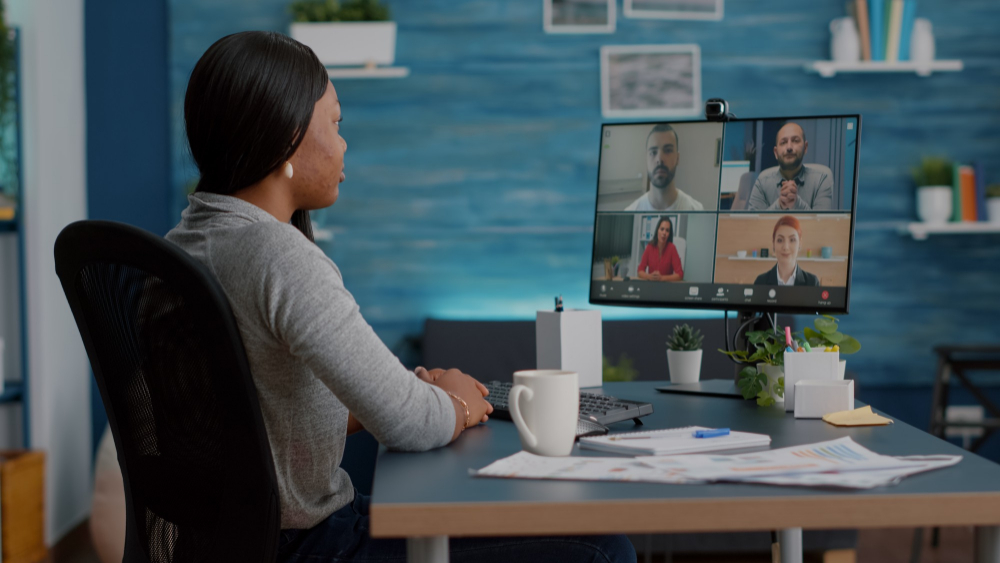What is a Live Webinar?
A live online meeting, presentation, or lecture is a “live webinar.” The phrase “web-inar” was invented as a result. Webinars are sometimes known as online conferences or online seminars.
In live webinars, participants worldwide may see and hear the presenter while also asking questions, taking surveys, and voting. Webinars are commonly used in sales, marketing, education, and HR training.
Benefits of Live Events and Webinars
Traditional corporate learning and development techniques have been thrown on their heads by the COVID-19 pandemic. It has forced firms to embrace digital transformation, resulting in a high need for more and newer digital economy skills and a trend away from in-person training toward online approaches.
If you wish your employee training program were a little more up-to-date, a little more adjustable, and maybe even a little less expensive, you’re not alone. Businesses are discovering that herding everyone into a classroom for training no longer works as remote work becomes the new normal and learning and development (L & D) become a critical goal to combat ever-widening employee skill gaps.
Live Webinar training is the next logical step. It simulates the classroom experience in a digital space using a webinar platform or a learning management system (LMS) with video conferencing features. This strategy has several advantages over traditional classroom training, including allowing employees to view movies on their computers and instructors to train students wherever they are.
Scenarios Where Live Webinars are Useful
Here are several scenarios in which webinars are helpful for training:
- When a company needs to educate its employees, some of whom work remotely, about a specific HR topic or policy,
- A business needs to hire and educate geographically scattered remote workers,
- A new product is being put out, training outside sales reps, vendors, and partners is necessary.
- In general, a webinar is a good way to communicate and train several stakeholders quickly, consistently, and electronically.
Technical Aspect of a Live Webinar
Hosting a live webinar involves:
- Creating a new webinar
- Adding contributors
Creating a new webinar
Users need to open their accounts and either create a new webinar or edit an existing one to get started.
The user can then add presenters and content providers. Next, the video stream needs to be set up with the help of your internet service provider (ISP) if you want to use a webcam and microphone for audio and visual communication. Once the recording is done, the presenter can choose from among different options to share them.
Adding team members and guest speakers
Team members can be added to the presenter list. For each team member, select an invitee and send them an email message with a unique link to join your meeting or webinar.
Hosting a Successful Live Webinar
Hosting a webinar takes some planning. From choosing the right equipment to identifying the best time to host your event, many elements need to be considered to make sure you make the most of it.
Here are some tips for hosting a successful live webinar:
Choose the suitable date and time
Please work with your internal stakeholders or client base when available online.
Determine who will attend
Make sure all attendees have registered ahead of time.
Prepare for technical difficulties
Ensure that there is enough bandwidth on both ends before beginning your program
Be prepared with an agenda
Create a schedule to know exactly what topics you’ll cover throughout your presentation.
Make it interactive
Encourage questions and provide a way for your audience to communicate with one another.
Create a post-webinar survey
Ask attendees what they thought about the event to get honest feedback on the presentation.
How to watch a live webinar
Attendees must first register and then log in to the webinar registration page. Registrants will be emailed a link to the live webinar at the date and time of the presentation. In addition, links to webinars that have been registered for are often sent and will take the registrant to the event they’ve signed up for.
The connections are frequently established for personal use and may only be used by those registered for the webinar and cannot be shared. Some webinars allow anybody to access them. Even if you could not attend the live streaming event, all registrants would receive a copy of the recording if the live webinar has been recorded.
Connecting Streaming Platforms
Streaming live events requires selecting the right webcasting tools. Not all streaming technology is compatible with one another. To ensure that your team can communicate effectively and efficiently, make sure you choose a platform that allows for smooth collaboration between multiple devices and connections.
It may be necessary to incorporate webinar technology into a different streaming platform in some instances. For example, if a live webinar has too many speakers or the organizers want to hold a public event that can be seen on social media, this might happen. In most situations, this is easily achievable using an RTMP injection. The source encoder must comply with RTMP streaming for RTMP streams to function.
About Training Firm International
The enterprise Training Firm International is a global training organization that provides a variety of information and training services to assist you in enhancing your company performance and personal development.
Contact us for Live Webinar technology training and schedule your sessions with our skilled instructors.
Learn more 4 live webinars that every business student should watch




